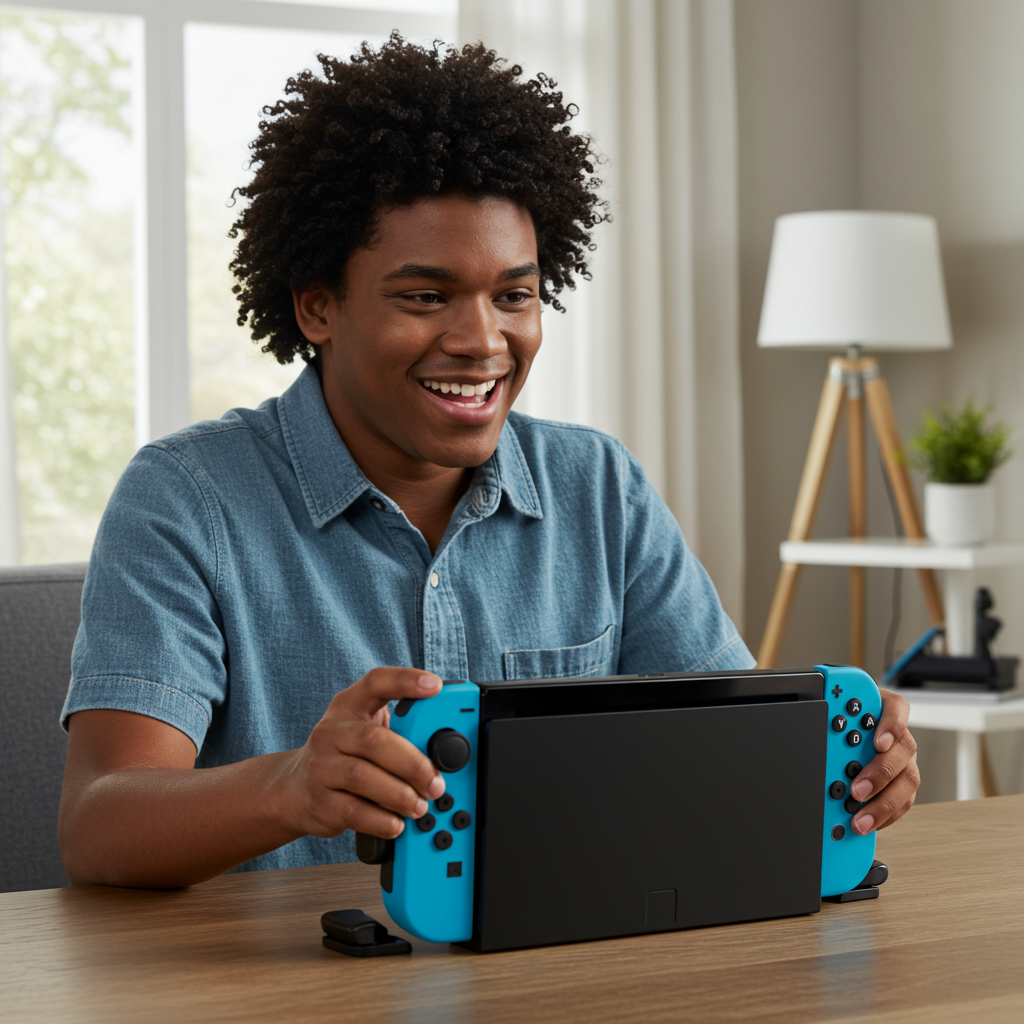Nintendo’s new console, the Nintendo Switch 2, has launched, generating massive buzz and achieving record-breaking initial sales worldwide. While much has been discussed about its performance upgrades, backward compatibility, and new features like GameChat, a crucial area remained shrouded in surprising silence ahead of release: accessibility.
Despite Nintendo having a history of accidentally creating accessible solutions, the initial reveal hinted at a more deliberate, holistic approach for the Switch 2, even featuring a dedicated hardware accessibility webpage. However, detailed specifics were scarce until the console’s debut. Now, having spent time with the device, we can finally answer some of those lingering questions. While there are a few notable missteps, the Switch 2 delivers an impressive suite of system-level accessibility features, marking a significant positive step for disabled players, even if Nintendo hasn’t loudly celebrated it.
Here’s a breakdown of the key accessibility considerations on the Nintendo Switch 2:
Intuitive Setup, But With a Barrier for Some
The initial setup process on the Switch 2 is generally intuitive and fast, even for users with cognitive disabilities who may find such procedures dense. However, a significant accessibility barrier exists right at the start: system-level accessibility features are not available during setup. Text-to-speech is not enabled by default, nor can you access text sizing or zoom options. This means blind players, in particular, may require sighted assistance to get the console configured initially.
Controller Compatibility and Adaptive Support
Good news for existing Switch owners: original Switch controllers and Joy-Cons are compatible with the Switch 2. This backward compatibility is a welcome feature, especially as some users may find the slightly increased size and the square shape of the new Joy-Con 2 grip uncomfortable for extended play. The ability to default to the familiar original Pro Controller is a plus.
Third-party controller support is also possible, often requiring peripherals like the Magic-S Pro 2. However, early reports indicate connectivity issues with certain brands like 8BitDo, though firmware updates are being released to address these. Encouragingly, Nintendo’s licensed adaptive controller, the Hori Flex, is supported in both docked and tabletop modes (though tabletop use requires a USB-A to USB-C adapter and some features like motion controls may be limited). For those who prefer alternatives to onscreen inputs, the console also supports connecting a USB keyboard via the USB-C ports, including during the setup process. The updated Joy-Con design also features a new mounting system, seemingly magnetic, and a mysterious new button, though concerns about joystick drift persist given teardowns reveal similar resistive technology to the original.
Text-to-Speech Functionality
The Switch 2 includes a system-level text-to-speech feature controlled by a discrete speed slider ranging from 50 percent to 300 percent. While Nintendo hasn’t provided official figures, testing suggests average default speeds of 120–130 words per minute in US English and 130–140 wpm in UK English. At maximum speed, US English users can reach approximately 400–420 wpm.
However, the system isn’t perfect. There can be noticeable delays before speech begins after selecting a menu option, and inconsistencies in speed were observed. A significant limitation is that text-to-speech does not function on the Nintendo eShop, which is a primary destination after setup, nor does it work in most games tested, including launch titles like Mario Kart World. This is a surprising oversight that needs addressing.
Audio Features
For audio customization, the Switch 2 currently offers limited system-level options. The key feature is the ability to toggle mono audio, which is vital for players who are hard of hearing and may miss sounds if stereo separation is used. Broader audio balance or EQ adjustments are not available system-wide.
Game Chat Speech-to-Text
The new GameChat feature, accessible via a dedicated hardware button, includes a speech-to-text function that has garnered attention for accurately transcribing even swear words. Beyond the initial amusement, this is a genuinely important accessibility feature, particularly for deaf players. It allows for full engagement with in-game communication by providing uncensored, accurate transcriptions, overcoming issues seen with previous censored or improperly transcribed text. While occasional general transcription errors may occur, this is typically inaccurate speech recognition rather than deliberate censorship.
Control Remapping
A major positive is the inclusion of system-level control remapping. Players can fully remap inputs for connected controllers, customizing each Joy-Con independently. This remapping menu can even be accessed quickly via the Home button’s quick menu at any time.
Despite this robust system feature, there’s a frustrating caveat: current evidence suggests Nintendo’s first-party games, including Mario Kart World, do not include in-game remapping options. While system-level remapping exists, in-game options are often more intuitive, convenient, and allow for remapping specific actions within a game without affecting system-wide settings or requiring constant adjustments for different titles. Curiously, Nintendo does allow remapping in the new GameCube games available to Switch Online subscribers, suggesting an understanding of its value, yet omitting it from new first-party releases.
A Quiet Win With Room to Grow
Overall, the Nintendo Switch 2 incorporates an impressive range of system-level accessibility features, a significant advancement over previous Nintendo hardware. The shift towards more deliberate support for disabled players is highly welcome. However, this positive step is tempered by Nintendo’s puzzling silence surrounding these features before and immediately after launch. Providing clear accessibility information pre-release is crucial for players to make informed purchase decisions and prepare necessary support or accessories.
While there are missteps, such as the setup barrier, eShop text-to-speech gap, and lack of in-game remapping in key titles, the foundation laid by the Switch 2’s system-level accessibility is solid. It represents a quiet win for Nintendo in this vital area, one that hopefully will grow and become more openly promoted over the console’s lifecycle.




